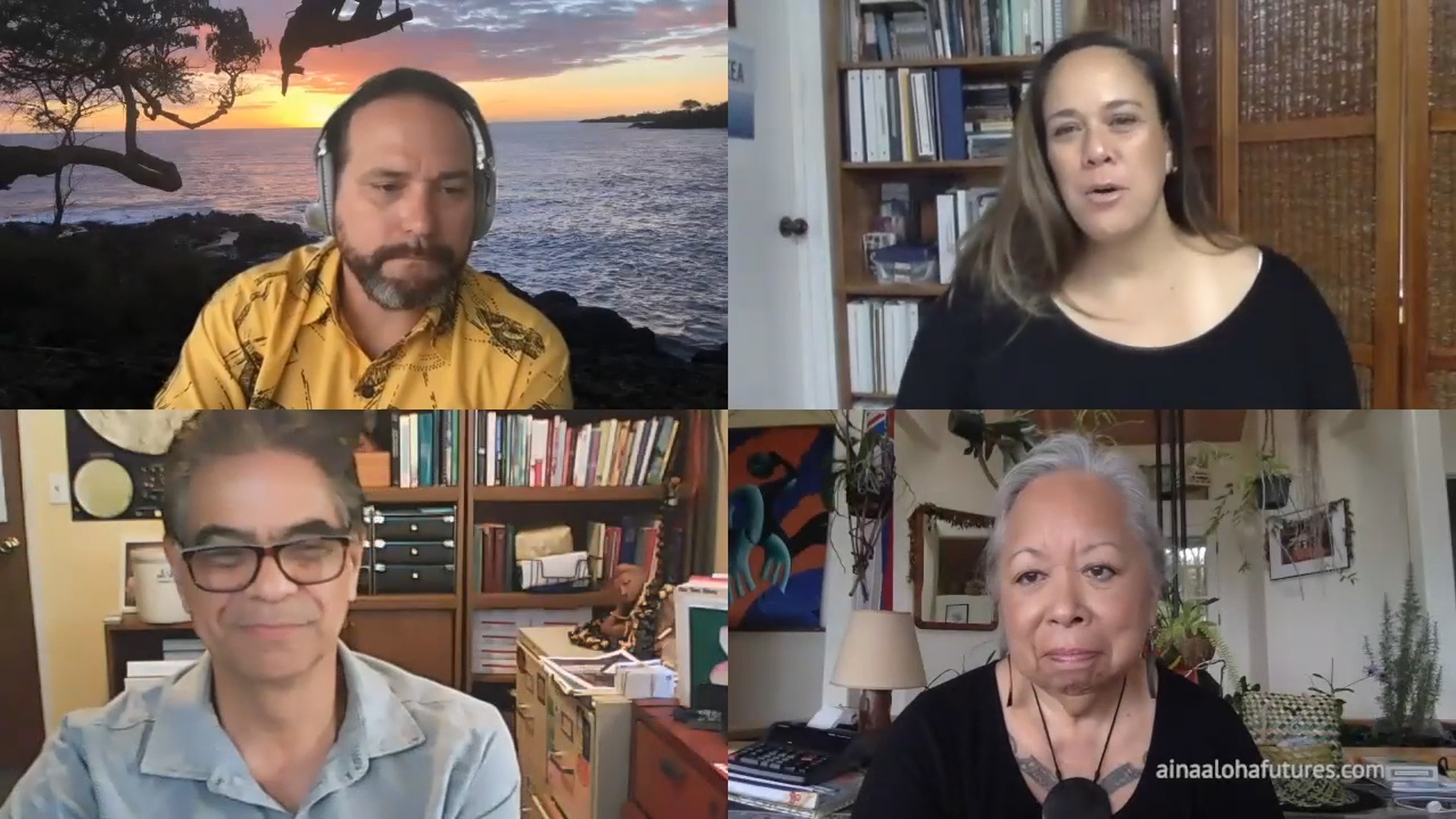(BIVN) – A group of Native Hawaiian community members is offering up an alternative reopening plan, as Hawaiʻi nears the October 15 start of the pre-travel testing program for visitors.
The ‘Āina Aloha Economic Futures (AAEF) group issued a news release on Monday, stressing the value of hoʻokipa in the time of the COVID-19 pandemic.
The AAEF plan has two stages. The first stage would include opening inter-island travel for Hawaiʻi residents. The second stage would open travel to Hawaiʻi for non-resident visitors – in time for the holiday season – as long as the first stage goes well.
The ‘Āina Aloha Economic Futures group has been active since the COVID-19 pandemic began. The group held an online press conference back in May 2020.
Video posted by Kanaeokana on Vimeo on May 19, 2020.
Here is the full media release issued Friday by the ‘Āina Aloha Economic Futures:
Hawaiʻi is scheduled to reopen our shores to visitors on October 15. While this plan could provide much needed relief for airlines and hotels that have suffered tremendous economic losses since COVID began, that same relief is not being felt by our own people who have endured even greater losses.
“We need to get it right the first time,” said Ikaika Hussey, one of 14 core organizers of the ʻĀina Aloha Economic Future (AAEF) initiative.
“Without safe jobs, a clear testing protocol, and worker protections, the rush to reopen Hawaiʻi will likely initiate a third and bigger wave of community infections, increased COVID deaths, another shutdown, more business closures, and a reputation as an unsafe, unreliable destination for travelers,” added Hussey.
“But there is a better way, and it begins with the values underpinning a reopening plan,” remarked Noe Noe Wong-Wilson, another of the 14 core AAEF organizers.
The ʻĀina Aloha Economic Futures initiative stresses the value of hoʻokipa, which recognizes that visitors can only be well-hosted by the people of Hawaiʻi when our families and communities are safe, strong, and can exercise our ability to be stewards of our islands.
“Hoʻokipa includes a reciprocal relationship where hosts and visitors have kuleana or responsibility for the well-being of each other. Residents need to trust that visitors are not going to infect us, and visitors need to trust that Hawaiʻi is safe.
“And as local visitors to neighbor islands, we must recognize our responsibility to keep our community safe and understand that in that context, we are the malihini.
“A reopening plan must protect both kamaʻāina and malihini, hosts and visitors, while balancing the need to re-establish opportunities for Hawaiʻi’s businesses to recover from economic hardship, sustain themselves, and in turn for our residents to access gainful employment.
“Opening our doors to residents first then to visitors will help ensure that we can open our doors safely for everyone,” said Wong-Wilson.
The ʻĀina Aloha Economic Futures’ two-stage reopening plan would include:
Stage 1: Starting now
- Continue requiring masks in all public spaces, including public transportation, for anyone over the age of 5.
- Limit the size of group gatherings to 10 or less.
- Open inter-island travel for Hawaiʻi residents.
- Implement rapid testing and temperature checks upon departure at all airports.
- Remove the 14-day quarantine on neighbor islands for Hawaiʻi residents.
- Allow restaurants, bars, retail shops, gyms, and personal grooming services to reopen, if they implement procedures to maintain limited occupancies and safe distances among patrons.
- Open beaches, trails, and public parks with safe distance guidelines.
- Continue an aggressive public information campaign to remind everyone of the need to remain vigilant and avoid spreading COVID-19. If small outbreaks occur, inform the community immediately, and announce when proper cleaning procedures have been implemented so the businesses can successfully resume.
- Require hotels to develop science-based safety standards to guard against the transmission of COVID-19, and to submit their safety plans to the State of Hawaii. The State should enforce these plans, and there should be a process for workers and the public to inspect facilities and ensure compliance on a regular basis.
Stage 2: Following successful Stage 1 implementation
- If inter-island travel does not create new waves of outbreaks, open Hawaiʻi to non-Hawaiʻi resident visitors in time for the holiday season.
- Require visitors to demonstrate a negative test result within three days of departure before being allowed to board flights to Hawaiʻi.
- Implement a second round of rapid testing and temperature checks upon arrival at all airports.
- As hotels re-open, they should restore jobs and maintain key safety protocols such as daily room cleaning.
“The above two-stage plan would ensure that Hawaiʻi’s businesses, workers, residents, and visitors can all enjoy a safer, more reliable, and successful reopening of Hawaiʻi,” said Hussey in the AAEF media release.
“It’s a balanced plan that embodies the full-breadth of what hoʻokipa truly means,” said Wong-Wilson.
The ‘Āina Aloha Economic Futures declaration was drafted by a group of Native Hawaiian community members: Amy Kalili, Davis Price, Ikaika Hussey, Joseph Lapilio, Kalani Kaʻanāʻanā, Kamana Beamer, Ph.D., Kēhaunani Abad, Ph.D., Keoni Lee, Lanakila Mangauil, Mahinapoepoe Paishon-Duarte, Nāʻālehu Anthony, Noe Noe Wong-Wilson, Ph.D., Ryan Gonzalez, and Ulalia Woodside, the AAEF website says.


by Big Island Video News11:58 pm
on at
STORY SUMMARY
HAWAIʻI - As Hawaiʻi prepares to reopen to tourism this week, the ‘Āina Aloha Economic Futures proposes an alternative plan "to protect both kamaʻāina and malihini."